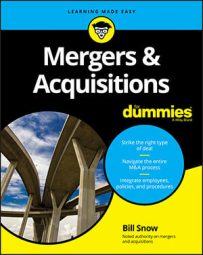Firing is an unfortunate side effect of business that is sometimes necessary after an M&A deal. Although you should give people chances to perform and show they’re part of the team, sometimes employees just don’t buy in to the new way of operating.
If you don’t have buy-in from your employees, especially your managers, you may need to ask certain people to do themselves a favor and leave; if they don’t leave on their own, you need to show them the door.
Firing people boils down into three basic camps: firing for cause, firing due to job performance, and firing due to redundancies.
Firing for cause is pretty straightforward: You’re canning the employee because of an explicit bit of wrongdoing. Embezzlement, cooking the books, committing or abetting a crime, and so on are all reasons to fire someone for cause. Firing for cause is the least painful of all employee terminations. The person deserves to be fired.
Letting someone go due to poor job performance is a trickier affair. The person may have given her best efforts to do the job but fallen short of the job’s goals and expectations. This situation can be difficult, especially if you personally like the employee.
But if you paid a person a base salary of $100,000 expecting her to generate $1 million in sales, and she generated only $10,000 even though you clearly laid out your expectations and gave her the tools to succeed, a change is necessary.
When letting someone go for cause or poor job performance, make the conversation short and to the point. Simply say, “It’s not working out; I’m letting you go.”
Ideally, if you have the personnel resources, you can turn the process over to an HR person and leave the room after you’ve delivered the news. Don’t belabor the process. The HR person should make sure all necessary paperwork is in order, including a severance check if that was part of the fired person’s package or expectation.
The final part of the termination trifecta is the most difficult situation: laying off people due to job redundancies, which isn’t uncommon in the M&A business. Most managers prefer to avoid laying off otherwise-good employees strictly due to business reasons. Paying severance and/or assisting an affected employee with finding another job can help soften the blow, but firing is unpleasant business.
No one likes to get fired, but don’t let that prevent you from making a change when you need to.

